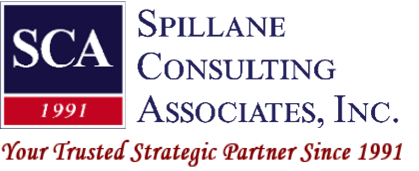Address Staffing Challenges with the New Hybrid Workforce Model
Written by: Donna Thaxter, Training, Coaching, and Professional Development Consultant
Since 2023, the mortgage banking industry has experienced significant staff reductions, influenced by natural attrition, such as retirement and employees transitioning to different business sectors. A second obvious factor driving staff reductions was the difficult decisions made in order to reduce staffing costs due to market conditions, technological advancements, and evolving business priorities.
When staff reductions occur, lenders find themselves in a new territory of challenges, specifically how to handle increased production without setting themselves up for future staff reductions and burnout of existing staff trying to do more work with fewer people.
Last week, we introduced the concept of a new version of the Hybrid Workforce model specifically designed to address today’s mortgage industry challenges, in particular, aligning your staffing needs and expenses to loan volumes. A new form of the hybrid workforce model—one that strategically blends permanent employees with on-demand mortgage banking professionals—offers a practical solution to this challenge.
When loan volumes strain the workloads of your permanent staff, you can adopt a more flexible model by integrating highly skilled contract professionals across key functions. This approach enables organizations to scale staffing levels in response to loan volume shifts, optimizing expenses without sacrificing expertise. By leveraging contract professionals in key functions such as underwriting, closing, compliance, and technology, lending institutions gain access to deep industry experience while mitigating the financial burden of maintaining a fully fixed-cost workforce.
Key Benefits
Strategic Cost Balancing
A blended workforce structure allows mortgage lenders to align staffing costs while ensuring they have the necessary personnel to meet demand during peak periods. This model provides:
Scalability – The ability to ramp up or down based on market conditions and match fixed and temporary expenses to loan production demands, vacations, and short-term leaves of absence.
Expertise on Demand – Access to additional seasoned mortgage professionals who bring fresh insights and specialized skills to complex areas such as Regulatory Compliance Management/CMS, and digital transformation.
EXAMPLE of Expertise on Demand: A lender experiencing challenges with HMDA compliance can tap into our experienced HMDA team, led by Anne Aalto, on a temporary or ongoing basis for training, partial or full LAR reviews, or a HMDA procedures assessment to ensure they include best practices for ongoing success.
The strategic implementation of a hybrid workforce, thoughtfully blending permanent employees with on-demand professionals, offers a powerful pathway to achieve both operational efficiency and workforce resilience. Now is the time for mortgage lenders to proactively explore and embrace this evolved hybrid approach. If you are one of the many thinking about building a more agile and cost-effective future, contact the team at SCA today!

